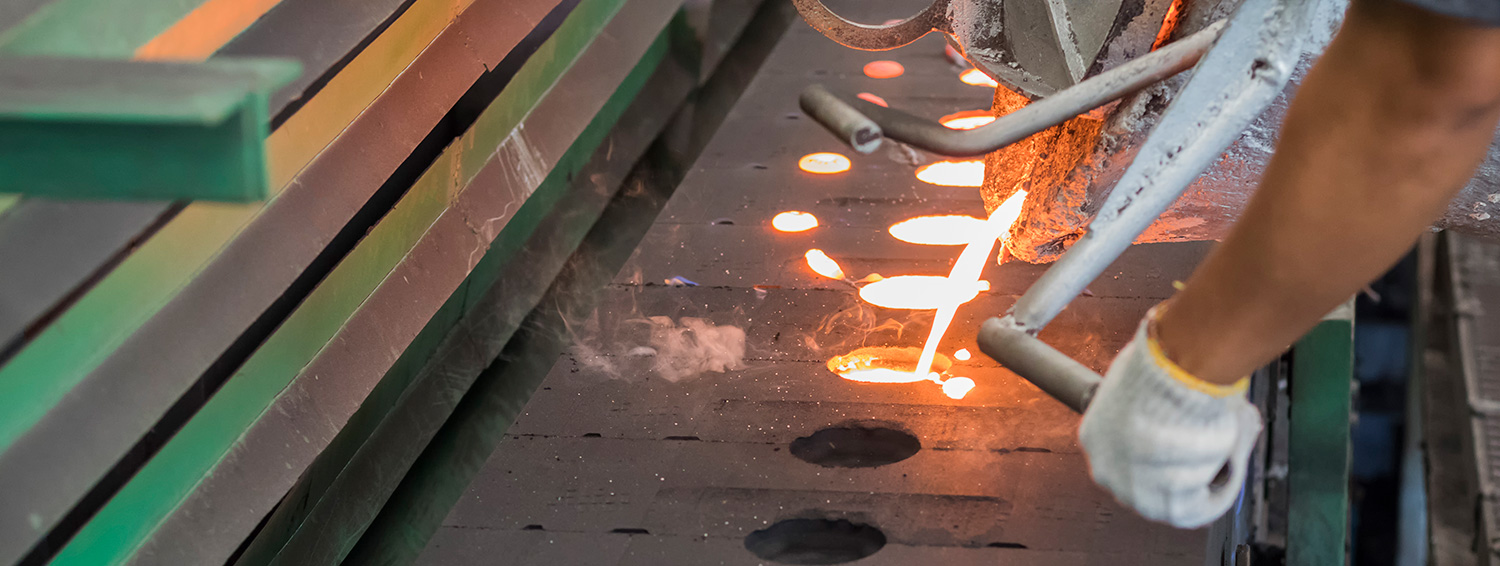Producing large steel castings can test any foundry’s materials, systems, and equipment to their limits. The effects of pouring temperature, pouring time and turbulence have a huge effect on as cast quality. When this is coupled with aspiration, undesirable oxygen activities within the melt and large changes in section thicknesses can produce both slag, inclusions and tearing defects.
Our philosophy therefore is, that in a perfect world the ideal situation for casting is: solidification time zero, pouring time zero, ingate velocity zero. This is obviously impossible, but it does create a very firm direction, i.e., that everything in the process that increases these values is undesirable.
Turbine cases often present the ultimate challenge, not only are they pressure vessels, which have to meet high integrity quality requirements and often have a huge surface area to weight ratio while exhibiting very significant changes in section thickness between the body and the flange.
CASE STUDY
Our customer was producing a 15 ton finished weight turbine casing, which with feeders padding and ingating system took the liquid cast weight to approximately 33 tons. Initially they were using a fibre board feeder lining and tapper padding, the wall of the casing up to the flange to achieve the required soundness. This method created a number of problems:
- Their largest furnace could only produce 30 tons and their largest ladle had a capacity of 30 tons. This meant they needed to use two furnaces and two ladles, which not only added to costs but complicated the metal handling and pouring enormously.
- They had a burn on / sand frit problem below the feeders caused by overheating of the fibre board feeder lining , which in turn gave them a cutting problem, in that if they tried to cut the feeders too close to the flange, the flame was deflected by the burnt on sand and cut into the flange.
- The padding on the inner wall of the body virtually doubled the wall thickness as it approached the flange which resulted in a lot of extra machining, but it also meant that they were machining into the centre line of the cast wall section exposing centre line type defects.
- The ingating system and their experience with severe erosion associated with running metal through sleeves meant that they were unwilling to fill the mold through the thin section at the bottom. Unfortunately this led to some dead spots / slag traps in this area.



PRODUCT SOLUTION BACKGROUND
Isotherm tile feeder linings. Isotherm is a lightweight ceramic bonded insulation material which has no binder and is fired at 1350 °C. This means there is no gas produced during casting and allows them to be placed very close or even on the casting surface without causing any defects or sand burn on. They also have a Modulus Extension Factor of 1.52 compared to the typical 1.2 MEF performance of fibre board on large feeders. This means that isotherm feeders are typically 45% smaller than the equivalent fibreboard feeder.
NEW CASTING METHOD
Through the use of our software, discussion and calculation we were able to reduce the cast weight to approximately 28.5 tons, by making the following changes.
- Resizing the 6 main fibreboard feeders with isotherm feeders saved 300kgs/ feeder = 1800kgs
- This also resulted in much cleaner feeder necks avoiding flame deflection and cutting damage.
- Removal of the inside wall padding = 1700 kgs. This was done by placing ingates in the bottom of the casting and creating two small isotherm feeders at the ingates, which avoids both shrinkages due to ingating and erosion/burn on in this area. The weight of these feeders was absorbed by simplification of the gating system.
- In order to remove the padding it necessitated a line of chills along the inner wall to meet the integrity standard required. However, this also avoided any risk of machining into the centre line area and the associated defects, while reducing machining time by approx. 3 hours.





CONCLUSION
From the foundry’s perspective, the cast weight reduction achieved by the project, not only made it possible for the foundry to use just one ladle and one furnace, which in turn not only solved the handling and pouring problems, but also resulted in a big energy and metal saving. When this is combined with the benefits of reduced machining and the ability to cut feeders very close to the flange, reducing arc air and grinding results in significant time reductions in the finishing process.
From our perspective the new method and gating changes not only met the customers requirements but clearly demonstrated the benefits of reducing pouring time -20% super heat temperature -15 °C and ingate velocity by 25%. The proof of the technical benefits can be seen clearly in the as cast surface of the casting.

